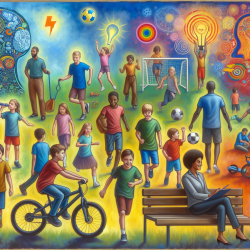Introduction
Attention-Deficit/Hyperactivity Disorder (ADHD) is a prevalent neurodevelopmental disorder affecting children worldwide. Traditional treatments often include medication and behavior management, but recent research suggests that physical activity (PA) could serve as an adjunct or alternative treatment. A recent study titled "Dimensions of physical activity as related to child attention-deficit/hyperactivity disorder symptoms and impairment" explores this potential.
The Research Findings
The study involved 51 parents of children aged 6–12 with ADHD, who filled out questionnaires to assess their children's ADHD symptoms and levels of physical activity. The researchers found that specific dimensions of PA, particularly intensity and duration, explained a significant portion of the variance in ADHD symptoms, beyond what was explained by demographic variables. However, these dimensions did not significantly account for ADHD impairment.
Interestingly, the study highlighted that frequency of physical activity did not significantly relate to ADHD symptoms or impairment, suggesting that how long and how intensely children engage in PA is more critical than how often they do so.
Implications for Practitioners
For practitioners working with children with ADHD, these findings underscore the importance of integrating structured PA into treatment plans. Here are some practical steps you can take:
- Encourage High-Intensity Activities: Activities that increase heart rate and involve sustained effort may be more beneficial.
- Focus on Duration: Ensure that children engage in PA for extended periods to maximize benefits.
- Educate Parents: Inform parents about the potential benefits of PA and how to incorporate it into daily routines.
Encouraging Further Research
While the study provides valuable insights, it also highlights the need for further research to explore the long-term effects of PA on ADHD symptoms and impairment. Future studies should consider larger sample sizes and more objective measures of PA, such as heart rate monitoring, to validate these findings.
Conclusion
Physical activity represents a promising, low-cost adjunct to traditional ADHD treatments. By focusing on intensity and duration, practitioners can potentially enhance treatment outcomes for children with ADHD. As we continue to explore this area, it is crucial to refine our measurement tools and expand our research efforts.
To read the original research paper, please follow this link: Dimensions of physical activity as related to child attention-deficit/hyperactivity disorder symptoms and impairment.










